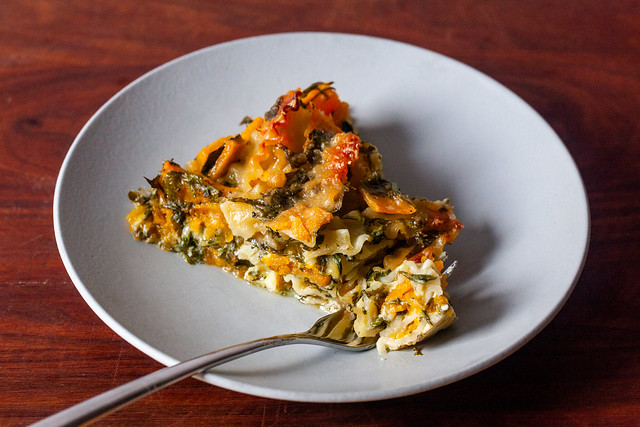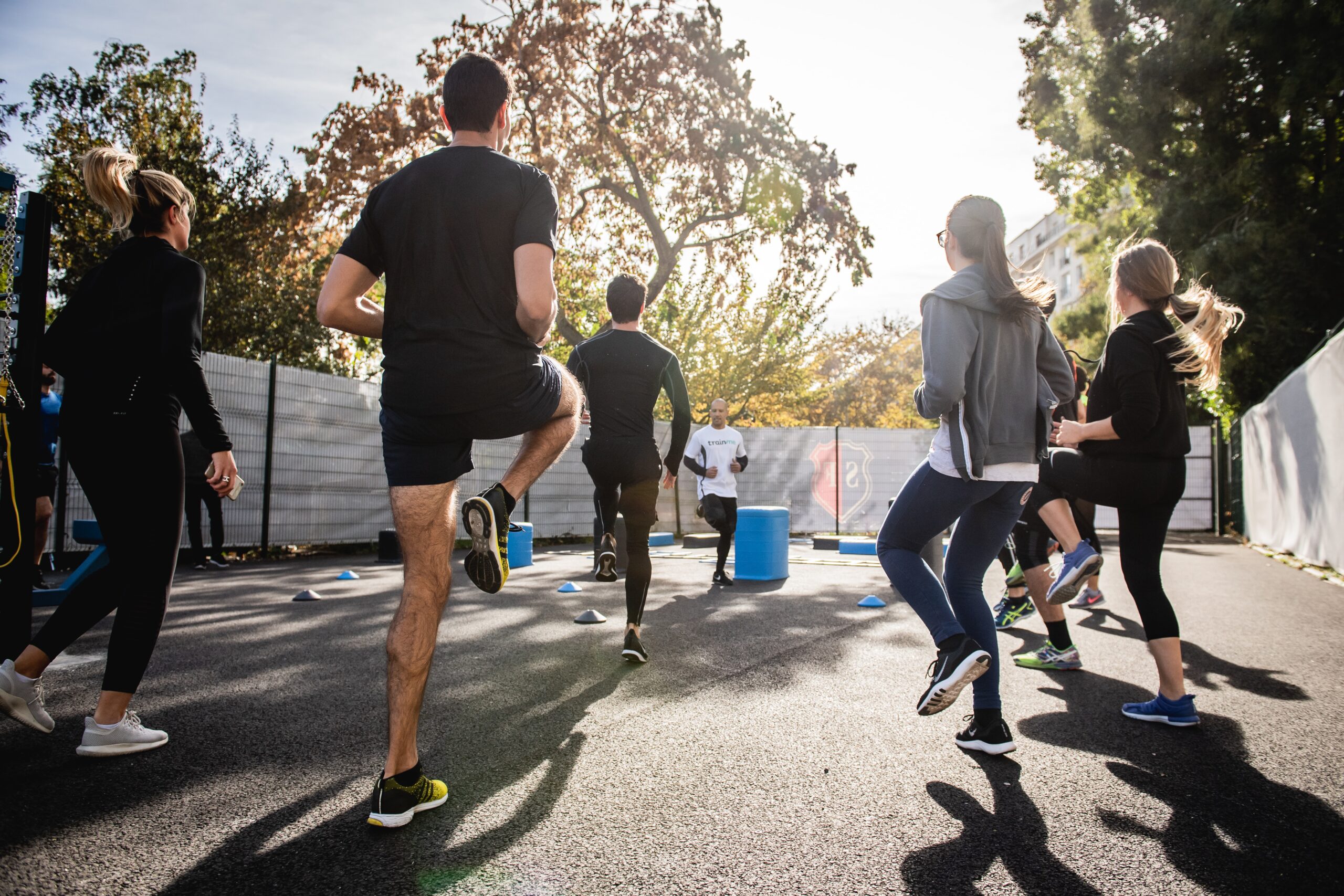There will come a time in your life when you may feel that you are…

Winter Squash and Spinach Pasta Bake
I am in awe of people who can make a meal plan, repeating many favorite dishes weekly or several times a year, knowing that they love what they love. Because I’m not: I like shiny new recipes. My favorite thing to cook will always be the last new thing I made. All attempts to be a responsible sort of person with a plan are consistently jettisoned by a sparkly whim that landed in my head in the last day or two, like a Big Apple Crumb Cake. Or, in this case, an Ottolenghi recipe from The Guardian I apparently bookmarked over three years ago and forgot about until this stunning image flashed across my screen a few weeks ago and all of my best-laid October plans were kicked to the curb. I haven’t a single regret.
This is not a usual pasta bake. We do not boil the noodles. We do not make or buy a sauce. We do not roast the winter squash or even sauté the greens. We throw every single ingredient raw into a big bowl for mixing and pour that into a parchment-slung springform (or equivalently-sized pan) pan and bake it for 90 minutes. That’s the rub; it takes a long time to cook. But this time is entirely hands-off, save removing the foil midway. You won’t be scrubbing pots, as the sum of your dishes to wash will be a cutting board, knife, whisk, grater, and a bowl.
What emerges from the oven is savory fall decadence. The proportions are upended — depending on your perspective, this has either half the pasta or twice the vegetables of most pasta bakes of this size. The squash softened, the spinach perfectly cooked, the noodles tender in the center and burnished to a snatch-able crisp on top, and the fragrance of garlic and toasted cheese is everywhere I want to be.
Winter Squash and Spinach Pasta Bake
- 1 large egg
- 1 cup (250 grams) ricotta
- 1 cup (100 grams) finely grated parmesan, divided
- 1 cup (85 grams) coarsely grated fontina cheese
- 1 1/4 cups (300 grams) water
- 3 tablespoons (45 ml) olive oil, divided
- 1 tablespoon kosher salt (I use Diamond; use less of other brands)
- Freshly grated nutmeg (optional)
- Freshly ground black pepper
- 1/4 to 1/2 teaspoon red pepper flakes, to taste
- 3 garlic cloves, thinly sliced
- 5 ounces (140 grams) baby spinach, roughly chopped
- 2 tablespoons thinly-sliced sage leaves or 1 teaspoons chopped thyme leaves (optional)
- 1 1/4-pound (560-grams) butternut or another sturdy winter squash, peeled, seeded, sliced thin or 1 pound (455 grams) in prepared chunks, sliced thin
- 8 ounces (225 grams) dried pasta (see Note), broken into pieces if large/long
Heat oven to 350°F (176°C). Line a 9-inch springform with 3-inch sides (see Note) with a sling of parchment paper, pressing it across the bottom and creasing the sides to get it to fit as best as possible. If the sides aren’t well covered, repeat with a second piece of parchment in the other direction.
Whisk egg and ricotta in a large bowl. Stir in half of the parmesan, fontina, water, 2 tablespoons of olive oil, salt, a few gratings of fresh nutmeg, lots of freshly ground black pepper, red pepper flakes, and garlic. Stir in squash, spinach, and sage or thyme, if using. Add dried noodles and stir until everything is coated.
Pour into prepared pan and press gently so everything is in as even of a layer as possible. Sprinkle with second half of parmesan. Gently fold any parchment that extends over the rim of the pan into the center and cover the pan tightly with foil. Bake on a sheet (for extra security against drips) for 1 hour, then remove foil, reopen the parchment folded over the top, and drizzle the dish with remaining 1 tablespoon olive oil. Return to the oven uncovered for 30 minutes. Pasta will be baked through and the top will be crisp. If it doesn’t have as much color as you’d like on top, you can finish it under the broiler for a minute or two.
Cool in pan on a rack for 30 minutes before removing the springform ring, sliding the pasta bake by its parchment onto a serving plate, and cut it into wedges.
Do ahead: This keeps in the fridge for up to 1 week. Rewarm uncovered in a 350-degree oven. I haven’t frozen it, but would expect it to freeze well, tightly wrapped.
Notes:
* Structural note: Like a lasagna, this is more wet and messy when it first comes out of the oven. I recommend a 30-minute rest at minimum (what you see here in the loose slices) but it will be cleaner to cut and more set the longer it hangs out. It reheats fantastically and keeps up to a week in the fridge. Last night, we reheated wedges from 6 days ago and they were (still) perfection.
* Pan size: I only tested this in a 9-inch springform but would expect it to also fit in a 11 to 12-inch ovenproof skillet and also, less glamorously, a 9×13-inch baking dish. No need to line with parchment if you’re serving it from the pan or not worried about leakage.
* Pasta shape: I am using a ribbon-shaped pasta called mafaldine or reginette. You can find it from many brands with slight variations such as: Anna (what I used), Sfoglini, Garofalo, Eataly. Classic ruffle-edged lasagna noodles broken into pieces will work too.
* Adaptation notes: I used Ottolenghi’s recipe as general inspiration, but not a literal guide. I skipped the tomatoes, pine nuts, feta, basil, parsley, and even the fresh noodles, instead using dried ones and adding more liquid so they could fully cook. I add some fontina for richness, a bit more parmesan, more salt, and sage.












